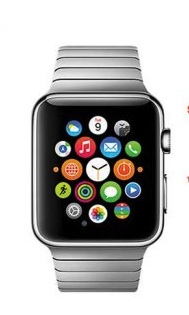
Apple Watch isn’t the first wearable in the market, but it’s certainly generated the most industry chatter.
Leading up to its 2015 launch, Apple released developer tools and guidelines, or as an Enterprise AppsTech article suggests, “the questions every CIO should ask about Apple Watch.”
“The challenge is that these categories of devices are so completely new that understanding their potential as enterprise solutions as well as the risks that they may pose to corporate data is very difficult,” the article said. “Knowing the right questions to consider in advance, however, makes it easier to respond to the release and mass adoption of these devices as more details, capabilities, and challenges come to light.”
The questions to ask surround these themes: Designing new security and appropriate use policies, finding the enterprise use cases, preparing for app development and being proactive. NFC capability is among the key concepts to consider as Apple Watch is logically going equipped with Apple Pay.
“One example is the ability to use wearable devices as replacement for traditional ID badges or key cards used to grant access to buildings, high security offices, or enterprise resources,” the report said. “Apple Watch, for example, will include NFC, and although the primary reason for NFC support is to support mobile payments using Apple Pay, there have been reports that Apple is looking to expand the capabilities of NFC in the iPhone 6 and 6 Plus to include building, facility, or mass transit systems access. If Apple does go that route, Apple Watch could then become a convenient ID badge”
There’s been a lot of chatter about wearables and Apple has amplified that noise, but what hasn’t been determined yet is the extent to which they could influence the payments sector. Getting consumers on board with the newfound technology and determining what drives consumers to use that technology to its full capacity is a challenge in itself for Apple executives marketing its product. Comparing it with Androids options is another key question for CIOs to ask.
“The enterprise wearable market hasn’t even been truly born yet, but if wearables are successful with consumers, they will quickly generate end-user demand in the enterprise,” the report concluded. “Much as you buy a crib and car seat before the baby is born, it’s time to start giving serious thought to the impact that Apple Watch, Android Wear, and other similar wearables could pose on your business and IT team.”
Because “we live in an app-centric world,” thanks t0 the booming iOS and Android competition, its down to the apps to set one apart from the other. Whether it be smartwatches or other wearables, the “availability of high quality apps that solve real problems will make or break a platform,” Enterprise AppsTech reported.
“This presents unique opportunities for businesses to produce both customer-facing smartwatch apps as well as internal enterprise apps.”